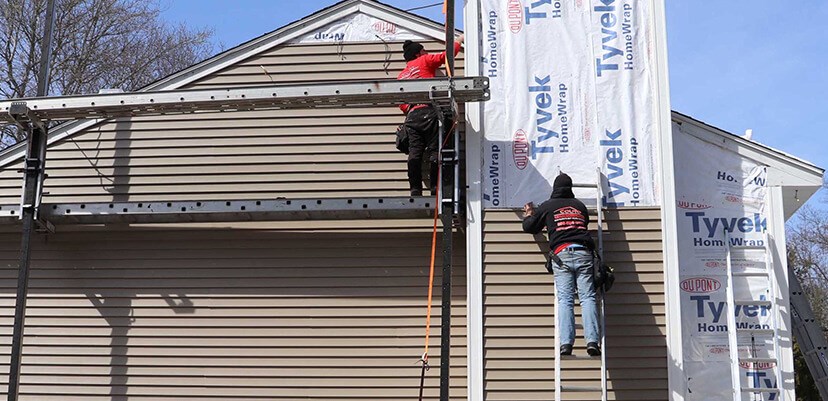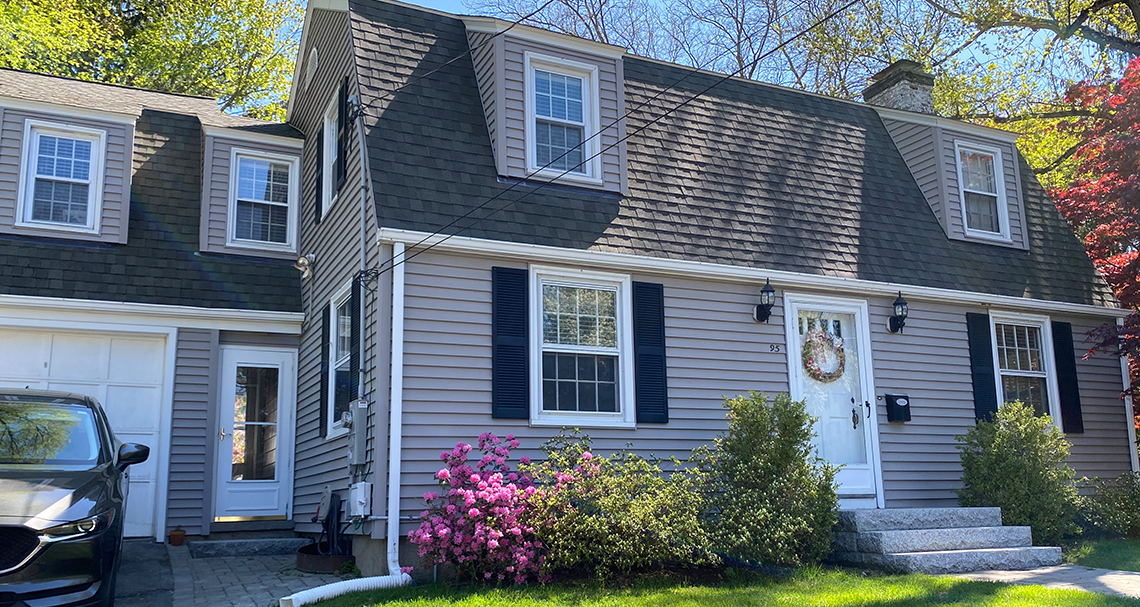The Vital Overview to the Numerous Types of Exterior Siding and Their Distinct Advantages
In the realm of home renovation, choosing the ideal house siding is an important decision that affects both aesthetic allure and functional efficiency. The range of products readily available, such as wood, plastic, fiber steel, brick, and concrete, each offer special advantages that accommodate different demands and preferences. Comprehending these distinctions can considerably boost the long life and value of a property - morris siding contractor. With so numerous alternatives to consider, which house siding product genuinely stands out for your certain task? Exploring these selections can result in educated choices that align with both design and usefulness.
Timber Siding
Wood exterior siding, a preferred choice for domestic exteriors, offers a timeless aesthetic that combines natural charm with architectural integrity. This siding product is available in numerous styles, including clapboard, tiles, and board-and-batten, allowing home owners to tailor their appearance to match their design choices. Wood siding is commonly crafted from durable types such as cedar, redwood, or yearn, which are known for their strength and capacity to endure ecological stressors.
Among the main benefits of wood exterior siding is its exceptional insulation residential or commercial properties, which can add to power effectiveness and reduced home heating prices. In addition, wood home siding is biodegradable, making it an environmentally friendly alternative when sourced sustainably. Normal upkeep, including painting or staining, can extend its life-span and improve its look, enabling home owners to preserve the all-natural beauty of the timber.
Nonetheless, potential downsides include sensitivity to parasites, rot, and climate damages, requiring ample treatment and maintenance - morris siding contractor. Despite these concerns, when correctly cared for, wood home siding can provide a long lasting and beautiful service that boosts the personality of a home while providing a cozy, welcoming atmosphere

Plastic Siding
Plastic house siding has actually emerged as a leading choice for homeowners looking for a low-maintenance exterior option that incorporates longevity and price. This flexible product is crafted from polyvinyl chloride (PVC), making it immune to various climate condition, consisting of wetness and UV rays. As an outcome, plastic exterior siding does not warp, rot, or discolor, making sure durable visual allure.
Among the key advantages of plastic house siding is its considerable array of colors and styles, permitting house owners to attain the desired try to find their building without the need for regular repainting. In addition, vinyl exterior siding is very easy to install, which can dramatically decrease labor expenses throughout construction or restoration tasks.
Vinyl home siding additionally adds to energy performance. Several options feature insulation support, which boosts thermal performance, aiding to maintain comfy indoor temperature levels and possibly reducing power costs. Its smooth surface helps with easy cleaning, requiring only regular washing with a yard pipe to get rid of dust and particles.
Fiber Concrete House Siding
Fiber concrete siding has gotten grip amongst building contractors and homeowners alike due to its amazing combination of resilience and aesthetic versatility. Composed of a mixture of cellulose, concrete, and sand fibers, this house siding option is engineered to stand up to extreme climate condition, consisting of high winds, hefty rain, and temperature fluctuations, making it a long-lasting selection for residential outsides.

Among the primary advantages of fiber concrete home siding is its resistance to bugs, such as termites, and its non-combustible nature, offering improved fire security. morris siding contractor. Additionally, it is readily available in a wide selection of styles, colors, and appearances, allowing house owners to attain their desired visual without giving up performance
One more benefit is its reduced maintenance demands; fiber concrete siding commonly requires painting or discoloration every 5-10 years, which is less frequent than various other materials. Moreover, its long life adds to a lower total price of possession, as it decreases the demand for regular fixings or substitutes.
Eventually, fiber cement siding see this here represents an outstanding investment for those seeking a resilient, appealing, and flexible exterior choice, incorporating both kind and feature to boost the home's aesthetic appeal.
Metal Siding
The allure of metal siding hinges on its robust sturdiness and contemporary aesthetic appeal, making it a favored option for contemporary architecture. Available in materials such as aluminum and steel, metal home siding supplies a variety of coatings and shades, enabling house owners to accomplish an individualized appearance that matches their style vision.

Energy effectiveness is one more significant benefit, as lots of metal exterior siding items are created with insulation alternatives that help control interior temperature levels. This can result in decreased power prices gradually. Additionally, steel home siding is usually recyclable, making it an eco-friendly choice for sustainability-minded house owners.
The setup process for metal siding can be relatively straightforward, causing a quicker turn-around time for building projects. Overall, steel house siding incorporates performance and design, making it a useful option for those seeking a visually appealing and long-lasting outside surface.
Brick and Stone Siding
Block and rock home siding attracts attention as a classic selection that improves the visual beauty of any type of home. Known for their resilience and low maintenance, these materials offer a remarkable return on investment while raising the residential or commercial property's visual charm. Offered in various shades, textures, and patterns, block and rock can be customized to fit varied building styles, from traditional to modern.
Among the key benefits of block and stone exterior siding is their power performance. Both materials have natural insulating homes that help manage indoor temperatures, possibly decreasing home heating and air conditioning prices. Furthermore, they provide superior fire resistance contrasted to other siding choices, adding to enhanced safety and security.
Another benefit is their longevity. Block and stone can last for decades, typically requiring very little maintenance past periodic cleansing. Unlike timber siding, they are invulnerable to bugs and rot, making certain a durable outside that withstands the elements.
Conclusion
In recap, the choice of siding significantly influences a home's aesthetic allure, energy efficiency, and upkeep requirements. Each kind of siding-- whether timber, plastic, fiber brick, steel, or cement and stone-- uses distinct advantages see this tailored to numerous house owner preferences webpage and ecological conditions.
One of the key benefits of timber home siding is its excellent insulation homes, which can contribute to energy efficiency and lower home heating expenses. In addition, wood house siding is naturally degradable, making it an environmentally pleasant choice when sourced sustainably.One of the key benefits of steel siding is its resistance to numerous environmental variables.Energy performance is another substantial advantage, as lots of steel exterior siding products are developed with insulation alternatives that help control indoor temperature levels. Each kind of siding-- whether wood, vinyl, fiber block, concrete, or steel and rock-- supplies unique benefits tailored to various house owner preferences and ecological problems.